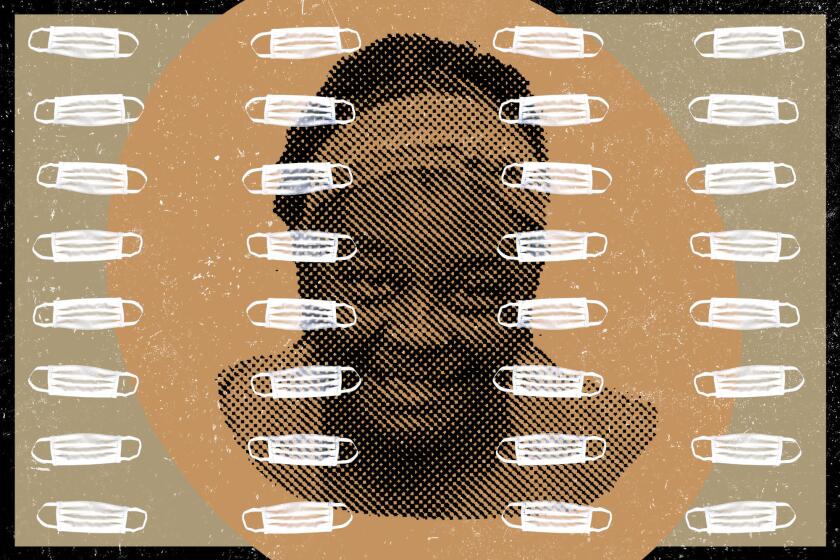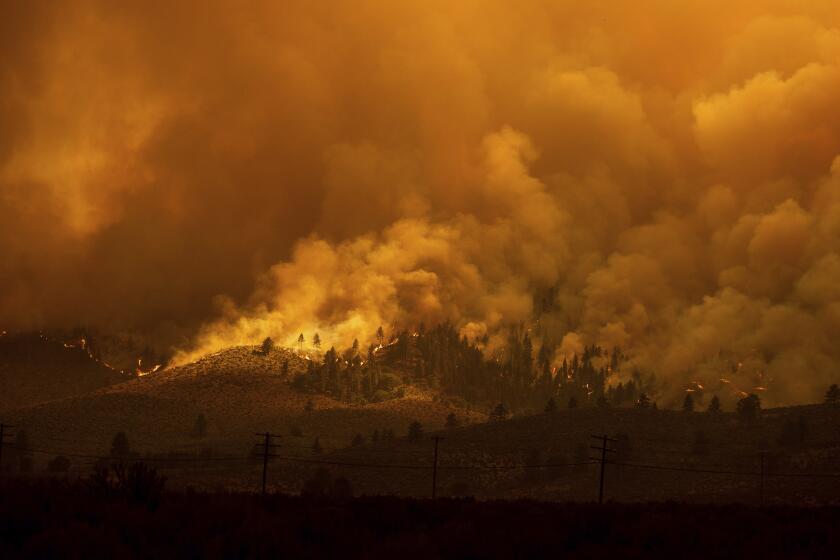She died protecting California: ‘Breathing Fire’ tracks female inmate firefighters
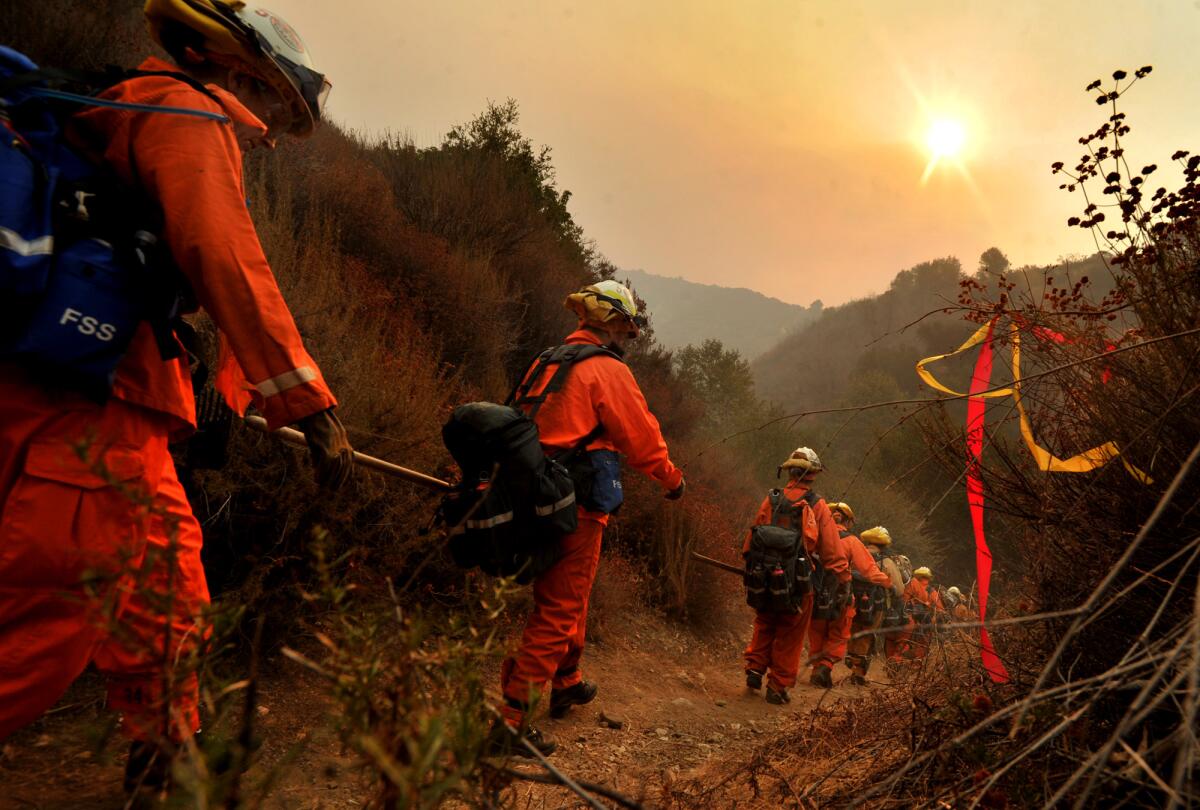
- Share via
On the Shelf
Breathing Fire: Female Inmate Firefighters on the Front Lines of California's Wildfires
By Jaime Lowe
MCD: 320 pages, $27
If you buy books linked on our site, The Times may earn a commission from Bookshop.org, whose fees support independent bookstores.
In February 2016, Jaime Lowe, an author and journalist born and raised in California, opened the B section of this newspaper and found — tucked under a story about Donald Trump and a KKK rally in Anaheim — an article about a firefighter killed in Malibu. It caught her attention for two reasons. First, the firefighter was Shawna Lynn Jones, 22, at a time when women made up only a small percentage of California firefighters. Second: Shawna was an inmate, the member of a crew built entirely of women serving time, earning just $2.56 a day or $1 an hour when actively firefighting.
For the next five years, Lowe set out to document the lives (and in Shawna’s case, death) of the women of the Conservation Camp program. Among the subjects of Lowe’s new book, “Breathing Fire,” are “Baby” Carla, who started serving time at 19 and is now a chain-sawing alpha worker; Shawna’s grieving mom Diana, all made up and alone in a dark Antelope Valley tavern; and Selena, a former MacArthur Park gang member, who brings her hustle into the woods, catching lizards to sell to fellow inmates so she can buy instant noodles from the camp store.
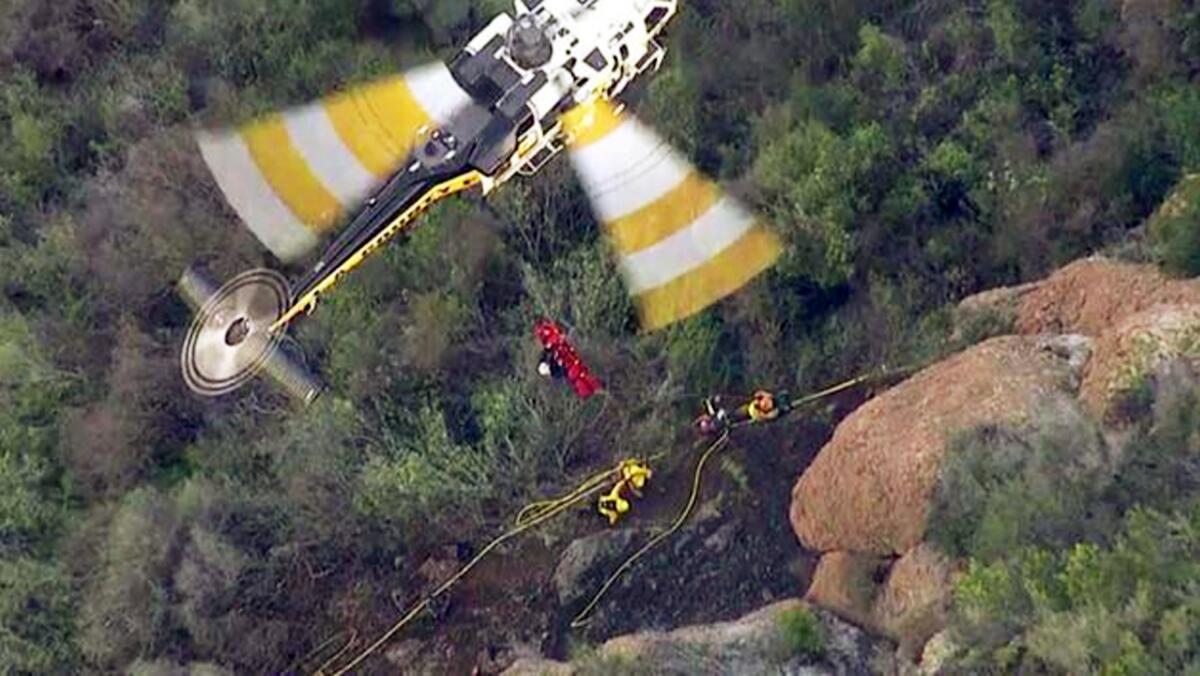
Over an email interview, Lowe shared the beauty, heartache, injustice and hope that emerged in her research and explained why she’ll never look at a winding California road the same way again. This interview has been edited for length and clarity.
Can you talk about the odd and alluring lingo of firefighting? Tools include Pulaskis and McLeods; a chainsaw cutter is the “saw,” her partner a “bucker,” etc.
I’m not a firefighter. ... I had to really rely on how the women I interviewed described their emotional and physical experience — what it felt like, what it sounded like, the fear, the adrenaline, the complexity of working the most dangerous job while being prisoners.
In theory, firefighting as an inmate might offer some escape from the conditions of incarceration. But the outcomes you describe often seem to perpetuate the injustices of the prison system. At one point, a seriously injured firefighter is handcuffed to a gurney.
Our carceral state is so broken that “choosing” to risk one’s life is often described as a privilege, because it is — it’s paradise compared to county jails or state prisons. Most of the women I’ve interviewed really credit the program as something that changed their lives in a major way, and they wouldn’t advocate for it to disappear as an option. But they also described the paradox of being relied upon as a workforce that saves California neighborhoods from fire while being policed by correctional officers.
Inmates who made masks and furniture for as little as 35 cents an hour say they felt pressure to stay on the job, even as the coronavirus spread through the prison factories.
The training you witness is awe-inspiring: burpees, chin-ups, timed runs with 45-pound packs. Before joining up, some of these women didn’t even know our national parks existed.
I could never in my wildest dreams make it through the workouts. It’s important to remember, though, that with all the physical training they go through, their bodies are subject to grueling injuries with insufficient care. Sometimes those injuries last a lifetime, well after they’re released from prison.
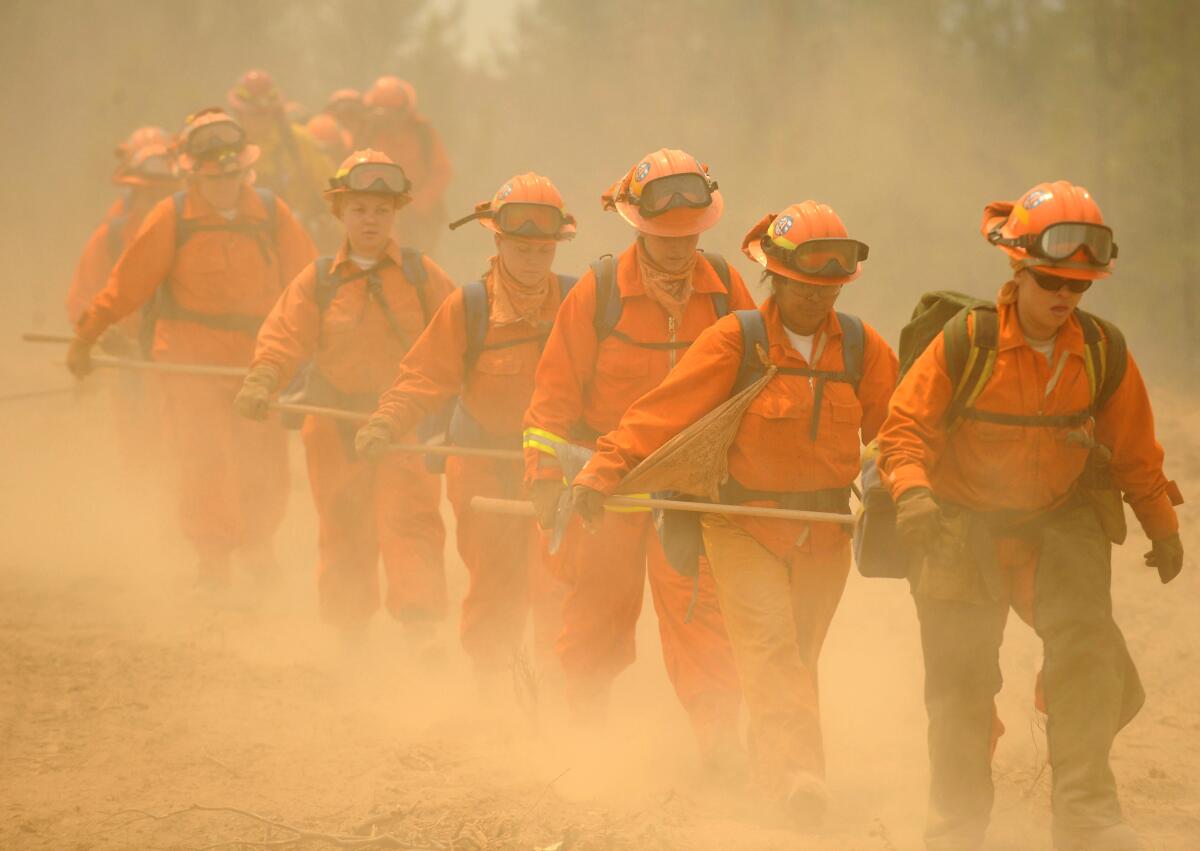
You also describe the experience of driving up the Pacific Coast Highway now, knowing not only about the female prisoners who keep it safe but also the inmate labor that built the road in the first place.
I will never drive on a California road again without thinking of how it came to be. Especially the mountainous, curvy, death-defying roads that California specializes in like the PCH, Topanga Canyon Boulevard, Mulholland and Sunset (not to mention the roads in Yosemite, the Sierras and way up north). The idea that some were laid by inmates who were captive because of laws designed to create a workforce changes every perception of California as a liberal bastion. And knowing that those crews still exist is again [reflective of] a spiritual and societal failure. If they’re needed to maintain fire roads and cut back growth, working to save a state immersed in a climate catastrophe, they should be paid and they should not be in prison.
“Breathing Fire” ranks alongside the sort of gritty outdoor journalism of Sebastian Junger or Jon Krakauer. But it’s also a work of careful human reporting, like Adrian Nicole LeBlanc’s immersive masterpiece, “Random Family.” Inevitably, that means some dead ends; your car literally got stuck in the sand of Antelope Valley. How did you maintain your momentum?
Whatever is on the page is because the women I interviewed were willing to spend the time with me and share their stories and their lives. I tried to be as respectful as possible of boundaries. ... I feel immensely lucky that I get to talk to so many people and hear their stories. In terms of getting stuck in the sand — I’m just not very smart and have a lot of unnecessary reporting pitfalls. I have been stuck in many places!
A new law to help inmate firefighters expunge their felony records is working, but it’s slow and complicated even as we enter another wildfire season.
One of the tragedies of the program is that inmates trained in firefighting — a dangerous job for which demand greatly exceeds supply in our new climate era — are often disqualified for the job once released because of their criminal records. California Assembly Bill 2147, which Gov. Gavin Newsom signed last September, aims to change that by allowing for expungement of those records. Will it?
Look, [AB 2147] is 100% a step in the right direction, because not allowing former incarcerated firefighters the opportunity to continue working is insane and absurd. However, it’s not enough. There’s still a legal process to go through with a lot of discretionary hurdles. Judges can deny an application for expedited expungement. DAs can challenge expungements that are granted and the bill does not guarantee a job.
How have the former inmates in your story fared? You write about some heartbreaking moments. Carla is cleaning a friend’s floor with a rag tied to a stick and the woman says, “We have a mop.” Diana, Shawna’s mother, is a painful example of the cycle of abuse and poverty that lands people in prison.
Many of the women are doing great, many have had more struggles than any human should have to endure, especially after emerging from the prison system. I’m not really sure I can quantify how each of them are doing, that’s their question to answer and I think it fluctuates from day to day and month to month. No matter what, reentry is hard and it sounds like from their experiences there’s very little actual support and a lot of hurdles along the way.
Individually, I think there are markers that point to changed lives. Carla seems great, has this loving partner and baby and feels completely removed from the challenges she faced before incarceration. ... Last time I talked with Diana, she was doing the best I’d seen her. I think the shadow of grief was lifting a tiny bit, but her life is irrevocably changed by the loss of Shawna.
The dryness of the vegetation, primed by both long-term drought and shorter-term heat waves, is making it easy for fires to ignite and even easier for them to spread.
Deuel is a continuing lecturer in the writing programs at UCLA
Book club: Join us
Jaime Lowe discusses “Breathing Fire: Female Inmate Firefighters on the Front Lines of California’s Wildfires” with Times columnist Erika D. Smith at the L.A. Times Book Club.
When: Sept. 28 at 6 p.m. PT.
Where: Virtual event. Get tickets on Eventbrite.
More info: latimes.com/bookclub
More to Read
Sign up for our Book Club newsletter
Get the latest news, events and more from the Los Angeles Times Book Club, and help us get L.A. reading and talking.
You may occasionally receive promotional content from the Los Angeles Times.
